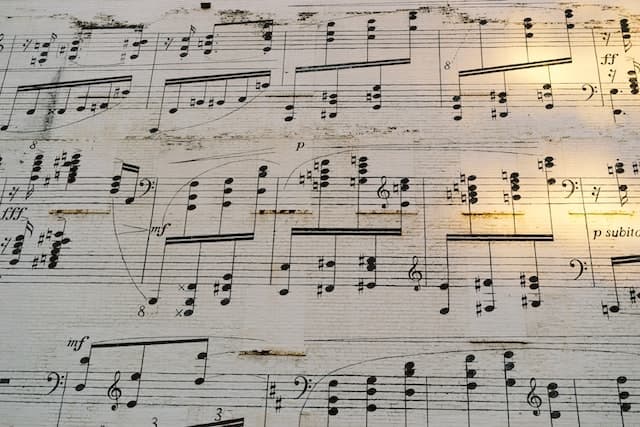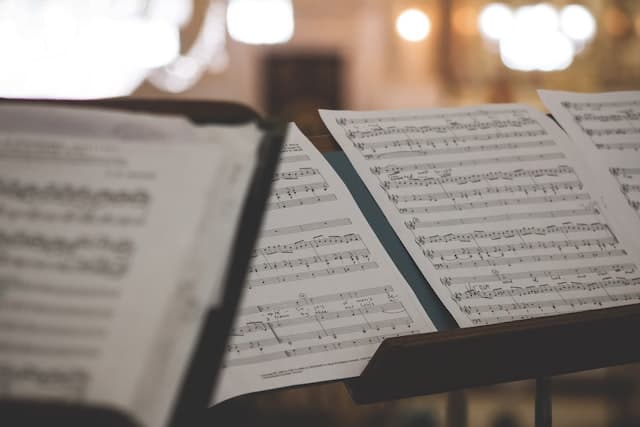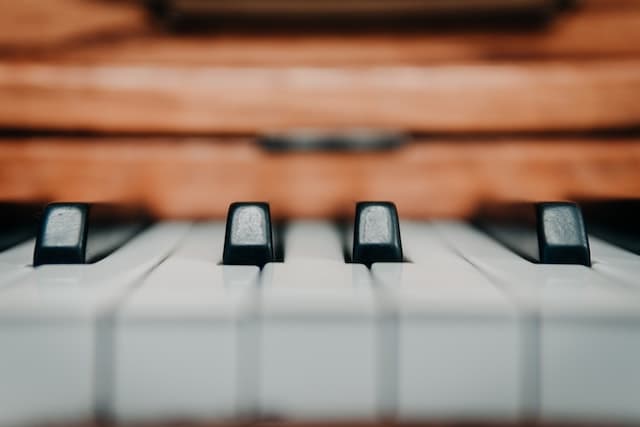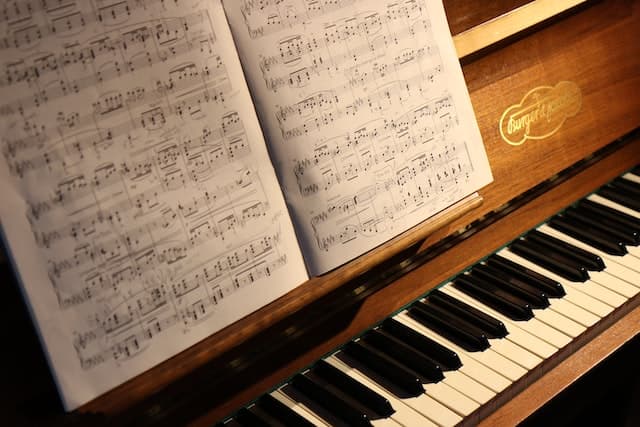What are Cadences in Music? How to Recognize the Different Types of Cadences by Ear

Even if you’ve never learned how to identify cadences in music before, they’re fairly easy to spot. Essentially, they’re like a form of musical punctuation – cadences give a feeling of finality to the ends of musical phrases. However, identifying specific types of cadences is more difficult than simply spotting a cadence at the end of a musical phrase. It takes dedication and the right ear training method to learn how to recognize cadences by ear. Unfortunately, many students follow ineffective methods like the trial-and-error approach, or pointless chord quality recognition exercises on apps or software (more on those later). Learning to recognize the different types of cadences in music is an important musical skill, and it’s an essential skill used in real-world scenarios by musicians of every level.
What are cadences in music?
To understand what a cadence is, start with the idea that every musical phrase feels like it’s going somewhere. How do we know that we’ve “arrived”, musically speaking? When we hear a cadence. Cadences are chord progressions that follow set patterns, which add a sense of completion (and sometimes a sense of anticipation) to the end of musical phrases.
Cadences in music definition: the ending of a musical phrase, which is perceived as a melodic or rhythmic articulation, a harmonic change, or a combination of the three.
That being said, a cadence won’t always be found in the last few chords of a musical phrase; sometimes the cadence will arrive, but the music will take another phrase or two to taper off. It’s also important to note that, while each type of cadence follows a specific chord progression, it’s also possible for these chord progressions to exist without being cadences.
Open vs. closed cadences
Every type of cadence is either an open cadence, or a closed cadence. Following the analogy of cadences being like musical punctuation, an open cadence is more like a comma, and a closed cadence is more like a period. When we hear an open cadence, we get the feeling that we’ve arrived at a destination, but the journey isn’t over yet. When we hear a closed cadence, there’s a stronger sense of finality – we’ve made it to our final musical destination.

Examples of cadences in music
What are cadences in music? You may be more familiar with them than you think! Perhaps one of the most easily recognizable examples of cadences is the “Amen” that comes at the end of some hymns. This is an example of a plagal cadence, which follows the chord progression IV | I. The first chord contains some tension, but the second one satisfies our craving for resolution by resting on the tonic.
Another example comes from the Beatles "Tell Me What You See", where you’ll see the following cadences at the end of each line of the verses:
V | I (authentic cadence)
IV | I (plagal cadence)
V | I (authentic cadence)
V | I (authentic cadence)
Why are cadences important?
Whether you’re listening to Bach, Elvis, or your friend’s garage band, your music of choice is meant to produce a certain feeling. Regardless of what that feeling is supposed to be, though, there’s always some form of resolution at the end of each musical phrase. And what is it that brings this resolution? Cadences.
Cadences in music don’t just bring you along on a journey; they take you to a destination. Cadences give you a sense of arrival. Without them, you’d probably feel like you were holding your breath as you waited for the end of the musical phrase to arrive. Once the cadence did arrive, you could exhale as you enjoyed the feeling of finality.

Different types of cadences
There are only four main types of cadences, which should be a relief to anyone who’s developing their cadences ear training. They’re known as the authentic (or perfect authentic) cadence, the plagal cadence, the half cadence, and the deceptive cadence. There’s also the cadential six-four, which is a melodic and harmonic formula that (like cadences) can bring a sense of finality to musical phrases.
Authentic or perfect authentic cadence
This closed cadence follows the chord progression V | I, and it’s one of the most conclusive cadences. The dominant V chord (the chord built on the 5th degree of the scale) sets up the expectation for resolution in the tonic I chord, and that expectation is satisfied pretty much immediately. In some contexts, the authentic cadence can even sound triumphant as well as final.
Plagal cadence
The plagal cadence (also a closed cadence) follows the chord progression IV | I. You could recognize it as the classic “Amen” at the end of a hymn, but it’s been used in songs from every era. This cadence also brings a strong sense of finality, but it can also feel relaxing to hear the plagal cadence rest on the tonic.
Half cadence
If a cadence ends on the dominant V chord, it’s a half cadence. This cadence usually follows the chord progressions ii | V, I | V, or IV | V. When we hear the V chord, we instinctively expect resolution – that’s why the V | I pattern of the authentic cadence is so satisfying. In contrast, the half cadence actually ends on the V chord, giving us the sense that it’s not over yet.

Deceptive cadence
This open cadence usually follows the chord progressions V | vi or V | IV. What’s so deceptive about it, though? Well, it starts out with the V chord, creating anticipation for resolution on the tonic I. However, that isn’t quite what we get. There’s some degree of resolution from the tonic note (which is included either in the vi or the IV chord), but there’s a different chord harmonizing the tonic note that prevents the cadence from feeling final.
Cadential six-four
What is a cadential six-four? It’s a melodic and harmonic formula that is sometimes used in cadences. It typically consists of a “decoration” of the dominant V chord, in which the third and fifth notes are displaced by notes one step above them. One common example of a cadential six-four would be written as I 6/4 | V. If these two chords weren’t at the end of a musical phrase (forming a cadential six-four), they would simply be written I | V. However, when they’re used as part of a cadence, they’re considered to be a cadential six-four. When the I chord embellishes the V chord, it becomes the I 6/4, giving mild harmonic tension and resolution as the cadential six-four.
Here’s what the I 6/4 | V cadential six-four would look like in the key of C:
G – G – C – E (I 6/4)
G – G – B – D (V of C major)
The cadential six-four isn’t considered to be a cadence in its own right, but it follows many of the same principles. For example, it’s used at the end of a musical phrase to create a sense of tension, then finality.

How to identify cadences by ear
One of the most common beginner mistakes is to use the wrong method. For some people, this means using the trial-and-error method – just taking shots in the dark until you accidentally hit the right notes. With the trial-and-error method, the student hears the note or chord, then tries to reproduce it on their instrument by haphazardly playing notes until they recognize that they’ve gotten it right. It might feel productive, but it’s about as useful as mixing random ingredients in a pan and hoping that they produce a beautiful cake. Since your efforts aren’t being directed in a productive way, they never lead to meaningful progress.
Another method to avoid would be chord quality recognition exercises, which can be found online through apps or software. These exercises train students to recognize the “quality” of each chord, e.g. major 7th, dominant 7th, minor, major, etc. However, students aren’t taught to recognize the root note of each chord (or the scale degree the chord is built on - i.e. V, I, ii, etc.); instead, each chord is studied in isolation (without a musical key being given). This is a lot like the interval method, which is just as counterproductive, and leaves students with little to no practical musical skills. There are multiple scientific studies showing why the interval method as well as chord quality exercises are ineffective.
The zoom-in method is another approach that doesn’t lead to recognizing chords quickly and intuitively. It supposedly teaches them to identify chords by picking out the individual notes, but this is overly analytical and time-consuming.
A much better alternative is the zoom-out method. This method teaches students to identify chords as complete units which have their own unique sonic sensation, depending on the scale degree they’re built on (it’s worth mentioning that non-diatonic chords also have their own unique sensation). Instead of picking individual notes apart, the zoom-out method helps students become familiar with the unique sensation of each chord within its key.
Understanding cadences in music isn’t necessarily the most complex of ear training skills, but beginners will need to develop a few other key skills before starting cadences ear training. These skills include:
- Tonic recognition
- A basic internalization of the key’s colors (the sensation that notes and chords assume within the key)
- The ability to extract the root note of a chord
If you’re interested in developing these skills and being able to recognize chords by ear quickly and intuitively, there’s some helpful information below, as well as in this post.

How to use cadences in music
Any musician who knows how to use cadences has a valuable tool at their disposal. They can use their knowledge of cadences for songwriting, composition, music production, improvisation, and any other scenario that calls for musical expression. If one of your goals for ear training is to bring your creative inspirations to life through music, knowing how cadences work is very helpful – and something that you’ll be able to use for the rest of your life.
Why cadences are a great place to start your chord progression ear training
A fundamental part of learning to recognize cadences in music is finding the tonic note, or the key in which the chords are being played. Not only is this a vital part of chord progression ear training, but it also prevents you from wasting time on atonal exercises like chord quality recognition exercises or interval-based exercises.
Learning chord cadences also requires you to develop a number of other practical skills, such as internalization of the key, a more refined perception of tension and resolution, and many other things that are essential to developing your musicality. By repeatedly listening to chord cadences, you’ll also automatically start internalizing each chord’s unique sonic sensation within the key. This is one of the most foundational aspects of developing chord recognition skills, and can be used in all kinds of real-world musical applications.

An innovative step-by-step ear training method based on science
Do you want to learn how to recognize cadences and chord progressions in music, but you aren’t sure where to start? One option is to sign up for our Free Use Your Ear Workshop, a no-strings-attached overview of the Use Your Ear method. In this workshop, you’ll learn about all of the most important scientific studies that are at the core of our ear training method. You’ll also evaluate your current level of ear training and how to start developing your musical ear based on that, plus you’ll get access to tailor-made exercises that will be appropriate for your skill level.
If you’re interested in going deep into our ear training method, our relative pitch video course may be a better option. It’s the only step-by-step, science-based ear training course available, and (unlike many other ear training courses) has a proven track record of success with thousands of music students. This course is comprehensive enough to take you from beginner to advanced levels, even if you’re starting with zero ear training skills. You don’t have to take our word for it, though; our former students can tell you themselves!
For an even more personalized approach, you can book 1-on-1 lessons with our expert ear training instructors. No matter what your needs or goals happen to be, you’ll get fully customized lessons with a private tutor who is qualified to teach the Use Your Ear method. You’ll be able to enjoy a more tailored experience, as well as instant feedback that’ll help you fine-tune your efforts.

Conclusion
Learning about cadences is an important part of developing your musicality. With the right ear training method, you can understand cadences, chord progressions, and many other fundamental musical elements without wasting time on ineffective exercises. We have designed the Use Your Ear method to transform your musicality step-by-step, no matter your age or current level.

